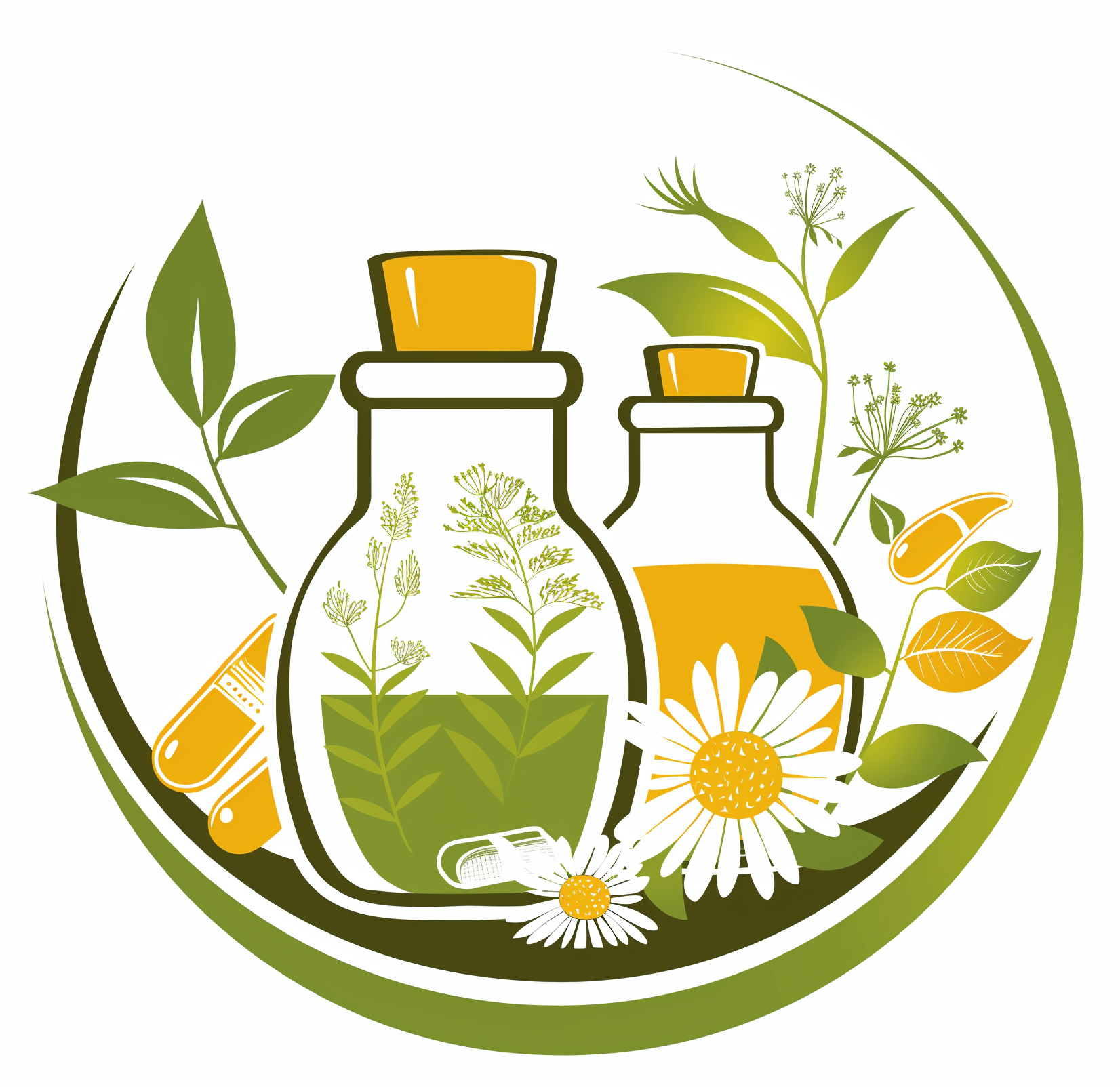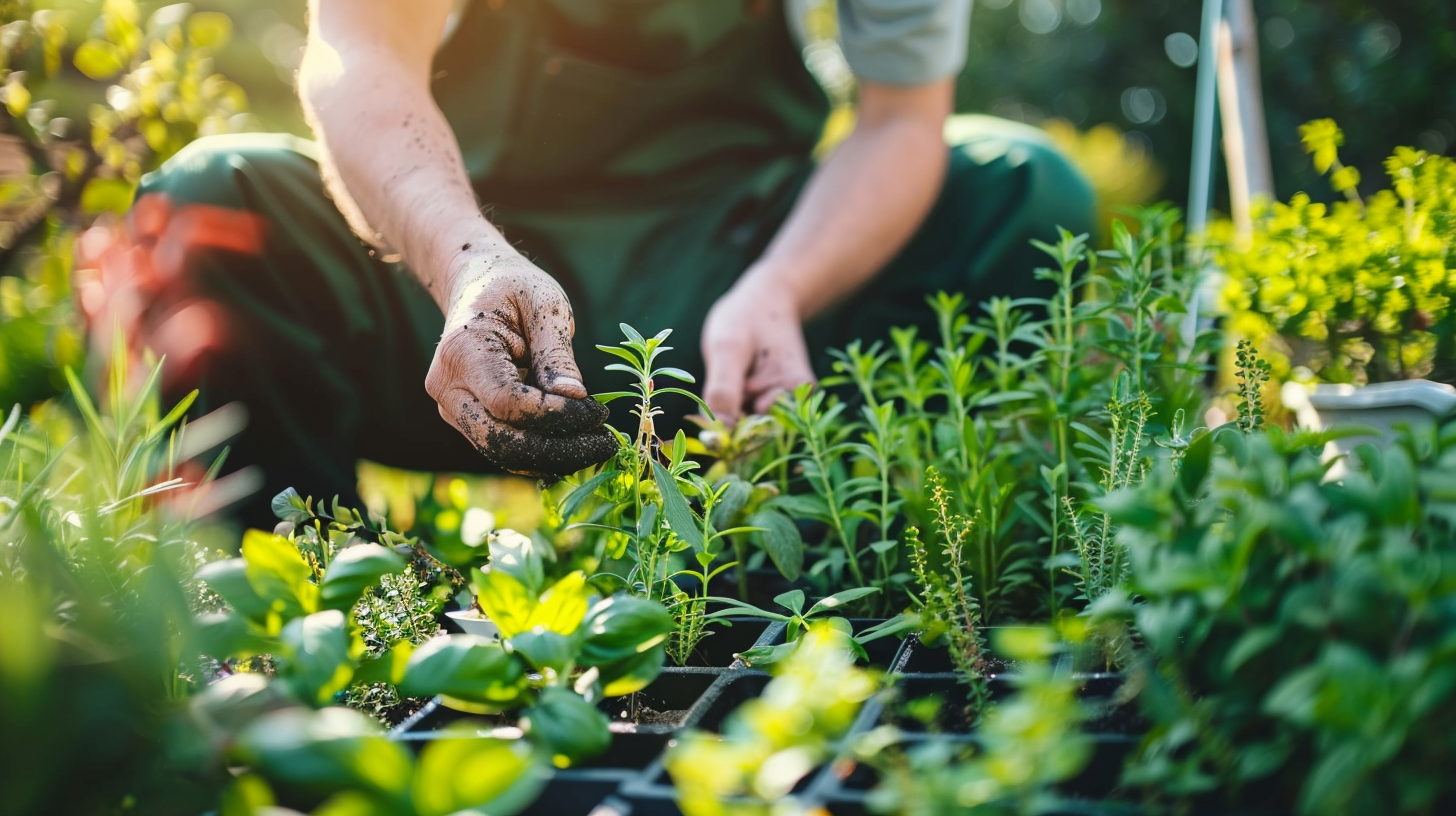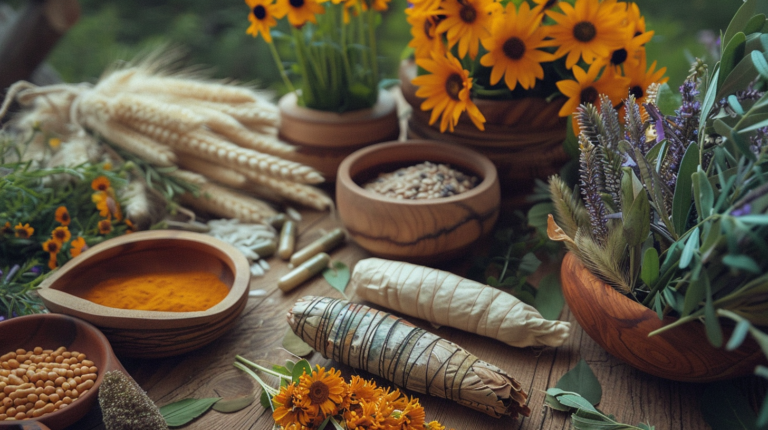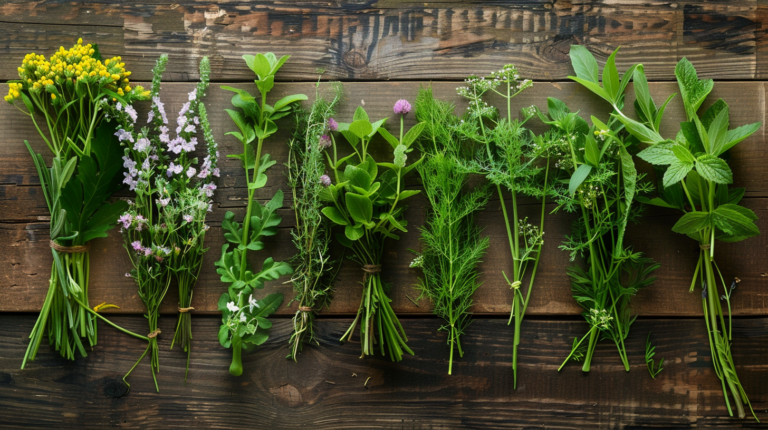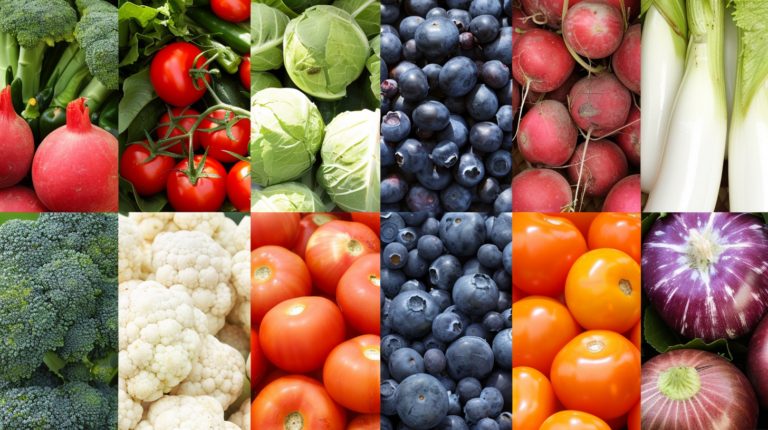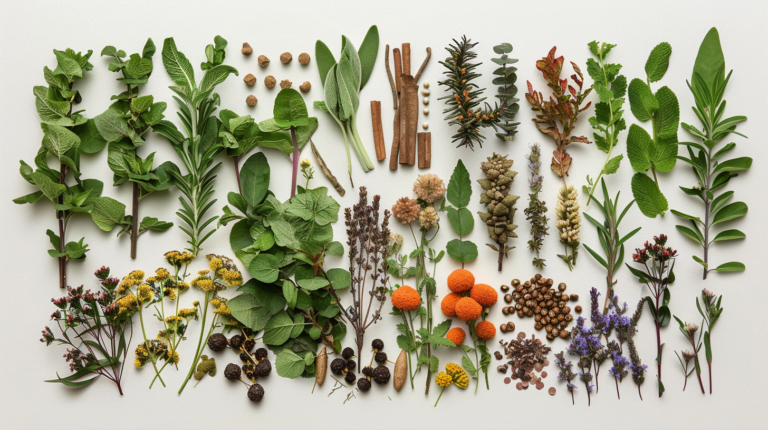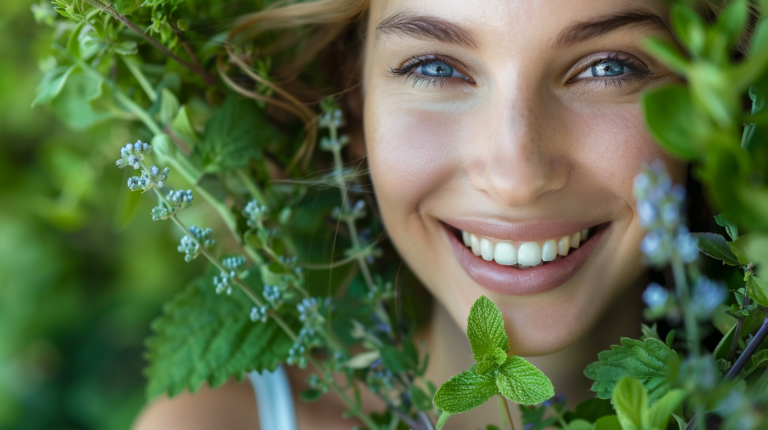Planting Medicinal Plants: Transform Your Garden into a Healing Oasis
Imagine stepping outside into your own garden, where the air is infused with the scents of rosemary and lavender, the soil is rich and dark, and the sight of vibrant medicinal herbs conjures images of ancient healers and wisdom passed down through generations. For many, the biggest challenge in achieving optimal health is knowing WHERE to start – there are countless pills and potions, but how do we know what truly nourishes our bodies and our immune system?
That’s where the magic of planting medicinal plants comes in. Not only does it allow you to grow your own natural remedies right at home, but it also offers a direct connection to nature and holistic health. Imagine treating a sore throat with fresh chamomile tea, boasting antiviral properties, or soothing a cold with mint. Your garden can transform into a sanctuary of wellness, helping you boost your immune system, reduce stress, and enjoy the simple yet profound pleasure of watching your efforts bloom into health-enhancing treasures.
Why Plant Medicinal Plants?
Benefits of Growing Medicinal Plants at Home
Health Benefits
Growing medicinal plants at home brings a treasure trove of health benefits. Think about it: having access to fresh, potent medicinal herbs right in your backyard or windowsill can bolster your immune system, alleviate common ailments like sore throats and cold flu, and even offer anti inflammatory and antiviral properties to help ward off sicknesses. One of my personal favorites is Aloe Vera, which I affectionately call the “plant of immortality” for its myriad skin-healing properties. Plus, there’s an undeniable satisfaction in knowing exactly where your herbs come from and how they were grown.
Environmental Impact
Let’s talk about giving back to Mother Earth. Growing your own medicinal herb garden is an eco-friendly endeavor. By cultivating native medicinal plants, you’re supporting local biodiversity and providing habitats for pollinators like bees and butterflies. Moreover, you’re cutting down on the need for commercial packaging and transportation associated with store-bought herbs. Just imagine, every time you step into your garden, you’re not only harvesting plant medicine but also contributing positively to the environment. I often think of the joy I feel when watching a butterfly flutter past my mint plants – it’s pure harmony.
Cost Efficiency
Let’s face it, our wallets aren’t bottomless pits. Here’s where a medicinal herb garden steps in as a financial ally. By planting medicinals at home, you reduce the need for store-bought remedies and costly treatments. For example, a simple lemon balm tea can help manage stress without breaking the bank. And let’s not forget the long-term savings – once your garden is established, many plants will self-seed or regenerate, giving you continuous use for years. Just recently, my chamomile patch decided to generously expand on its own. Mother Nature sure knows how to stretch a dollar!
Top 5 Medicinal Plants to Grow
Aloe Vera
Ah, Aloe Vera, the unsung hero of herbal remedies. This succulent is renowned for its gel, which can be used to treat burns, cuts, and skin irritations. It’s like having a natural first-aid kit in your garden. Ensure it gets plenty of sunlight and well-drained soil, and it’ll reward you abundantly.
Lavender
Lavender, with its soothing aroma, is more than just a pretty plant. It’s a powerhouse of anti inflammatory properties and offers great benefits for the nervous system. Perfect for teas or sachets, it helps reduce anxiety and promotes restful sleep. Trust me, nothing beats the smell of fresh lavender under your pillow.
Chamomile
Beloved by tea enthusiasts, chamomile is a gentle, flowering plant used to help with sleep and digestive issues. This tender plant blooms in sunny spots and offers sweet, apple-scented flowers perfect for brewing a calming tea.
Mint
Mint is as delightful as it is tenacious. This resilient plant thrives almost anywhere and can be used to soothe digestive problems or freshen your breath. I love adding it to salads and drinks, and its lush green leaves make the garden look endlessly vibrant.
Calendula
Calendula, also known as marigold, is a bright, cheerful flower with potent skin-healing properties. Great for making salves and creams, calendula helps with cuts, bruises, and skin irritations. It loves sunny garden beds and thrives with minimal fuss.
Getting Started with Planting Medicinal Plants
Choosing the Right Location
Indoor vs. Outdoor Planting
The eternal question: indoor or outdoor?
Both have their perks. Indoor planting allows for year-round growth and easy access, while outdoor gardens yield larger quantities and invite nature’s helpers like pollinators.
Personally, I combine both, with my more delicate herbs safe from frosty winters indoors, and hardier plants basking in the outdoor sun.
Sunlight Requirements
Sunlight is the lifeblood of your medicinal herb garden. Most medicinal plants favor full sun, which means at least 6-8 hours per day. However, certain herbs like lemon balm and mint are more shade-tolerant. Pay attention to each plant’s preference and position them accordingly for lush, thriving growth.
Soil Conditions
Good soil is like a hearty soup – it needs the right ingredients. Well-drained soil enriched with compost helps your medicinal plants thrive. Aim for a balanced pH level around 6-7 to create the ideal environment for most medicinal herbs. Trust me, a little attention to soil quality goes a long way in ensuring healthy, resilient plants.
Essential Tools and Materials
Basic Gardening Tools
You don’t need a shed full of fancy tools to start your medicinal herb garden. Essentials include a trowel, pruners, a watering can, and gloves. Investing in good-quality tools will make the planting process more enjoyable and efficient. I still remember using my grandma’s old trowel – it worked like a charm and came with a sprinkle of nostalgia.
Organic Fertilizers and Pesticides
Keep it natural! Organic fertilizers like compost, fish emulsion, and bone meal provide essential nutrients without harmful chemicals. For pest control, consider neem oil, insecticidal soap, or companion planting to keep those pesky bugs at bay. Your plants, and the environment, will thank you.
Preparation
Soil Preparation
Your soil is the foundation of your medicinal herb garden. Start by loosening the soil to a depth of about 12 inches. This frothy environment will help roots penetrate easily. Mix in organic compost or aged manure to enhance fertility and ensure well-drained soil. Adequate drainage is crucial because standing water can lead to root rot. Trust me, your herbs will thank you by thriving splendidly.
Selecting Seeds/Seedlings
Starting your garden from seeds gives you a hands-on connection to your plants’ life cycles, while seedlings give you a head start. Before you run to the nursery, consider what suits your needs and climate. For seeds, I usually splash out on reliable sources like Mountain Rose Herbs or Horizon Herbs. If buying seedlings, inspect them for signs of vigor – no yellow leaves or drooping stems, please! Your grandmother’s wisdom holds true: healthy starts make for happy plants.
Watering Techniques
Overwatering is a common pitfall in herb gardening. Medicinal herbs prefer to dry out between waterings. Use a soaker hose or drip irrigation to avoid wetting the leaves excessively—wet foliage is an open invitation for pests and diseases. Water in the early morning to minimize water loss to evaporation and ensure your plants hydrate before the heat of the day.
Planting Process
Sowing Seeds
Sowing seeds is like placing tiny hopes into the earth. Plant seeds at a depth twice their diameter. For tiny seeds like chamomile or lemon balm, surface sow and gently press them into the soil. Sprinkle a light dusting of soil or vermiculite over them. Keep the seed bed moist until germination, and remember patience is more than a virtue here—it’s a necessity.
Transplanting Seedlings
When your seedlings have at least two pairs of true leaves, they are ready to move to their permanent home. Transplant them on a cloudy day or in the evening to minimize transplant shock. Dig a hole larger than the root ball, set the seedling in, and backfill with soil, firming gently around the base. Water well and provide shade for the first few days.
Spacing and Depth
Proper spacing ensures good air circulation, which helps prevent diseases. Refer to individual herb requirements, but a general rule is to space herbs about 12-18 inches apart. Planting at the correct depth ensures plants establish roots quickly—place seedlings at the same depth they were in their pots.
Caring for Your Medicinal Plants
Watering and Feeding
How Often to Water
Medicinal plants, much like us, don’t appreciate having wet feet. Water thoroughly once the top inch of soil feels dry. In hotter climates, you might need to water more frequently. Conversely, wetter climates call for less irrigation. Always aim for deep watering to encourage roots to grow deeper.
Types of Fertilizers
Opt for organic fertilizers like fish emulsion, comfrey tea, or compost. High-nitrogen fertilizers promote lush foliage but can inhibit the medicinal properties contained in the herb’s aerial parts. Less might be more here – I often add compost tea monthly and leave it at that.
Dealing with Pests and Diseases
Common Pests
Every garden deals with uninvited guests. Common pests like aphids, spider mites, and whiteflies find medicinal plants as irresistible as we do. My personal go-to is a spray made of water, neem oil, and a few drops of dish soap. Give your plants a regular inspection to catch any issues early.
Natural Pest Control Methods
Fight nature with nature. Companion planting with basil or marigolds can deter many pests. Introducing predator insects like ladybugs and lacewings is another green method. Some gardeners swear by garlic or chili sprays as well. Combine these methods and your herb garden will be a fortress.
Harvesting and Using Medicinal Plants
When and How to Harvest
Signs of Maturity
Patience, dear gardener, is a virtue at this stage. For most herbs, the best time to harvest is just before the plant blooms. Essential oils are most concentrated in the leaves at this time. The morning, after the dew has dried but before the sun’s heat, is ideal for harvesting.
Best Practices for Harvesting
Use sharp scissors or pruning shears to make clean cuts and avoid injuring the plant. Cut above a leaf pair to encourage new growth. For perennial herbs like rosemary and mint, harvesting regularly actually helps the plant grow more vigorously.
Preparing and Storing Medicinal Plants
Drying Techniques
Drying herbs preserves their magical properties for later use. Hang bunches upside down in a warm, well-ventilated area out of direct sunlight. Alternatively, use a dehydrator set to a low, gentle heat. Once crisply dry, strip the leaves from the stems and store them.
Storage Methods
Store your dried herbs in airtight containers, away from light and heat, to maintain their potency. Glass jars with tight-fitting lids work great. Label everything with the herb name and date of harvest. Trust me, it saves you from the classic ‘mystery jar’ dilemma months down the line.
Conclusion
Planting and nurturing a medicinal herb garden is a deeply rewarding journey, harmonizing you with nature and granting you a sustainable, cost-effective way to support your health. Each step, from sowing seeds with hope to harvesting the bounty, connects you to generations of herbalists before you. Whether you’re tending to herbs indoors by the window or outdoors under the sun, every effort contributes to a thriving, health-boosting garden brimming with life and care.
